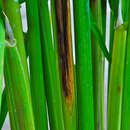en
names in breadcrumbs


Pseudomonas is genus of Gram-negative aerobic bacteria that form large colonies when plated on assays, bear a motile tail or flagella, and have a slightly curved rod-shaped body. They are found living in almost every microbial ecosystem with a wide distribution due to their metabolism (Palleroni, 2010). Some Pseudomonas species are used in agricultural settings to protect seedling roots from fungus (Chin-A-Woeng et al., 2000), others are the culprits for much of the food spoilage in the the food industry, and a few can act as opportunistic pathogens as in the case of P. aeruginosa. They have an particularly dense cell wall that allows them to survive in unusual environments, are naturally resistant to penicillins, and form super sticky plaques or biofilms on surfaces (Hassett et al., 2002). Suitable habitats include soil, plastics, sterilized hospital structures, subzero temperature environments, and chemical containers such as alcohol bottles. Their cell walls have an additional structure called a porin that allows them to alter their surrounding by pumping out foreign substances like antibiotics, and organic compounds to resist environmental changes.